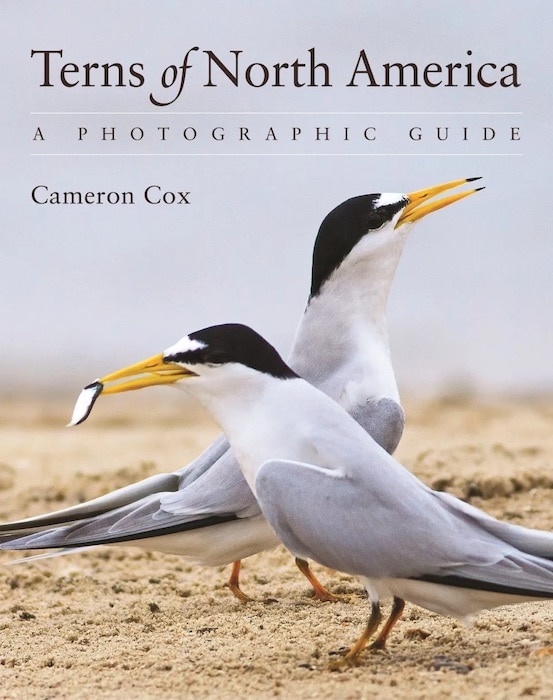| Terns of North America | by Cameron Cox | Princeton University Press | 2023 | Paperback | 201 Pages | 325 Colour Photos | ISBN: 9780691161877 | £21.99p |

The Publisher’s View:
This is the essential identification guide to the terns, noddies, and skimmers of North America. Covering every species and featuring hundreds of high-quality colour images, Terns of North America is the ideal companion for anyone interested in this charismatic but sometimes challenging group of seabirds. Detailed species accounts describe the size of each bird as it appears in the field along with structure, behaviour, flight style, vocalizations, subspecies, and North American and worldwide ranges. An incisive introduction lays out a remarkably simple approach to identification that focuses on key elements and addresses how to avoid getting bogged down in the variability in appearance. This state-of-the-art guide also provides additional in-depth coverage of the two most challenging groups of terns, Sterna terns and crested terns, aiding rewarding field identification while also highlighting the beauty and elegance of these marvellous seabirds.
The Author:
Cameron Cox is the owner and operator of Avocet Birding Courses, a company that offers workshops and tours that focus on teaching birding skills and knowledge to make birding more fun. He is the co-author of the Peterson Reference Guide to Seawatching.
Fatbirder View:
Given how I feel about photographic guides… stand by to be shocked…
What’s not to like!
So why does this guide please me when most fail? A number of things… first and foremost the size of the book and therefore the photographs. Its big without being weighty. This means a full-page photo, or even as little as a third of the page, allows for lots of detail. Lots of detail means salient ID features are easy to spot and the accompanying text points that out and a lot more. Again it’s all salient, no verbiage, nothing esoteric or arcane, you do not need a degree in anatomy to understand.
Secondly, the high-quality photos are always posed the same. Supplemented by action shots, juvenile plumage etc, but the adults in profile are easy to compare. Then, blow me down, they give some comparison plates too, yes they are small but, again, the differences are plain.
Plenty of ID help, good, informative text and background facts is great and the added bonus is that some of the single page plates are coffee table quality, you can enjoy this for the photography itself as well as the beauty of avian life… like I said ‘what’s not to like!’
Fatbirder
